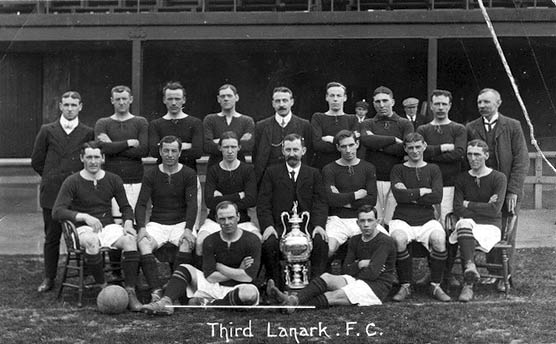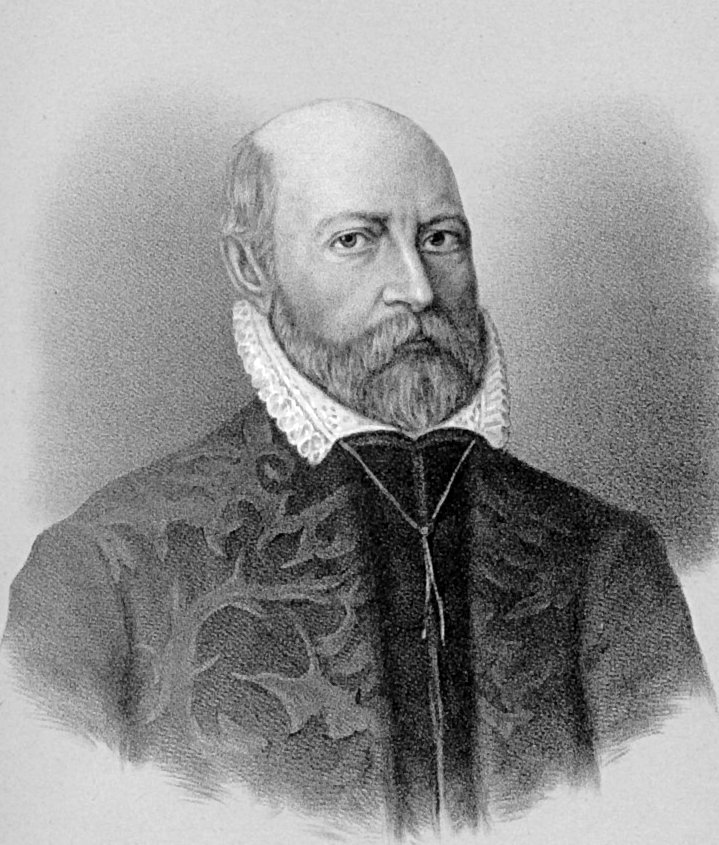|
Third Lanark A.C.
Third Lanark Athletic Club was a Scottish football club based in Glasgow. Founded in 1872 as an offshoot of the 3rd Lanarkshire Rifle Volunteers, the club was a founder member of the Scottish Football Association (SFA) in 1872 and the Scottish Football League (SFL) in 1890. Third Lanark played in the top division of the SFL for the majority of the club's existence, and won the league championship in 1903–04. The club also won the Scottish Cup twice, in 1889 and 1905. Third Lanark went out of business in 1967, as a result of mismanagement, six years after having finished in third place in the SFL. Third Lanark's former ground, Cathkin Park in Crosshill, is still partially standing and is used for minor league football. In 1996, an amateur football club called Third Lanark was founded, with intentions of restoring the club's name to senior football, and returning to play regularly at Cathkin Park. In 2008, the club was reformed again and currently has an amateur team and four ... [...More Info...] [...Related Items...] OR: [Wikipedia] [Google] [Baidu] |
Cathkin Park (1872–1903)
Cathkin Park was a football ground in the Crosshill area of Glasgow, Scotland. It was the home ground of Third Lanark from their foundation in 1872 until they moved to New Cathkin Park in 1903. It also hosted Scottish Cup final matches and the Scotland national team. History Third Lanark were founded in 1872 by members of the Third Lanarkshire Rifle Volunteers and began playing on a piece of land that formed part of a drilling field for the regiment. As the stadium developed, a grandstand was built on the western side of the pitch, a pavilion in the north-west corner, open seating on the northern and eastern sides of the pitch, and embankments at the southern end.Paul Smith & Shirley Smith (2005) ''The Ultimate Directory of English & Scottish Football League Grounds Second Edition 1888–2005'', Yore Publications, p152 An early experiment in floodlighting was conducted there in October 1878. The ground was considered good enough to host the Scottish Cup final in 1881–82, ... [...More Info...] [...Related Items...] OR: [Wikipedia] [Google] [Baidu] |
Joseph Taylor (footballer, Born 1850)
Joseph Taylor (16 December 1850 – 4 October 1888) was a Scottish amateur footballer who played for Scotland in the first ever international football match against England in 1872. Taylor is regarded as an important figure in early international football, playing in all of Scotland's first six international games, and captaining them on two occasions. A fullback, Taylor played for Queen's Park with whom he won the Scottish Cup in 1874, 1875 and 1876. QPFC.com His final international appearance came in the first international match against |
List Of Scottish Football Champions
The Scottish football champions are the winners of the highest league in Scottish football, namely the Scottish Football League (SFL) from 1890 until 1998, the Scottish Premier League (SPL) from 1998 until 2013 and the Scottish Premiership thereafter. The SFL was established in 1890, initially as an amateur league until professionalism in Scottish football was legalised in 1893. At the end of the first season Dumbarton and Rangers finished level on points at the top of the table. The rules in force at the time required that the teams contest a play-off match for the championship, which finished in a 2–2 draw, and the first ever championship was thus shared between two clubs, the only occasion on which this has happened. In 1893 a lower division was formed, with the existing division renamed Division One. The higher tier continued during World War I but the league was suspended altogether during World War II. Although there were several short spells when a third level was cre ... [...More Info...] [...Related Items...] OR: [Wikipedia] [Google] [Baidu] |
1890–91 In Scottish Football
1890–91 in Scottish football was the 18th season of competitive football in Scotland. This season saw the introduction of the Scottish Football League with ten teams competing. League competitions Scottish Football League Dumbarton and Rangers were declared joint champions after drawing a play-off game 2–2 at Cathkin Park, Glasgow on 21 May 1891. Renton started the season as members of the Scottish Football League, but were expelled for professionalism (the game was still officially amateur at this stage). Also, Celtic, Third Lanark and Cowlairs Cowlairs is an area in the Scottish city of Glasgow, part of the wider Springburn district of the city. It is situated north of the River Clyde, between central Springburn to the east and Possilpark to the west. Administratively, in the 21st ... were all docked four points for fielding ineligible players. Other honours Cup honours National County Edinburgh Exhibition The Edinburgh Exhibition Co ... [...More Info...] [...Related Items...] OR: [Wikipedia] [Google] [Baidu] |
Glasgow Football Association
Founded in 1883, the Glasgow Football Association, based in the city of Glasgow, Scotland and affiliated to the national Scottish Football Association, is one of the oldest such bodies in football. In the modern game its influence is limited, the remit being "to represent the interests of the senior football clubs in Glasgow". Those senior clubs competing across the divisions in the Scottish Professional Football League include the two largest and most successful in the country by some distance, Celtic and Rangers (collectively the Old Firm), as well as Partick Thistle, Queen's Park (the oldest football club in Scotland) and Clyde (who no longer play home matches in the city and have a small support partly as a consequence of their relocations); the three smaller clubs exist in the shadow of their dominant neighbours. A sixth team, Third Lanark, had a strong record until their sudden collapse in the mid 1960s. The association's most prominent role is the administration of th ... [...More Info...] [...Related Items...] OR: [Wikipedia] [Google] [Baidu] |
Hutcheson's Grammar School
Hutchesons' Grammar School is a co-educational independent day school for pupils aged 3-18 in Glasgow, Scotland. It was founded as Hutchesons' Boys' Grammar School by George Hutcheson and Thomas Hutcheson in 1641 It is a selective school, meaning prospective pupils must sit an entrance test to gain admission. The Boys' and Girls' schools amalgamated in 1976, at the grounds where the Boys' school had moved to almost two decades prior to form the current senior school. The Girls' school campus became the junior school and in 1994, a new pre-school block at the junior school was constructed. Today, "Hutchie", as the school is known informally, has around 1,300 pupils across its Pre-school, Junior and Senior Schools. In 2019 it had second-highest exam results in Scotland The School is governed by Hutchesons' Educational Trust The current Rector is Colin Gambles. History In 2001, the school expanded into Glasgow's West End when it merged with Laurel Park School and created ... [...More Info...] [...Related Items...] OR: [Wikipedia] [Google] [Baidu] |
Strathbungo
Strathbungo is a mainly residential area of southern Glasgow, Scotland, bordered by the neighbourhoods of Crossmyloof to the south, Govanhill to the east and Pollokshields to the north and west. The settlement grew up as a small isolated village built along the Pollokshaws Road, one of the main arteries leading southwards from the centre of Glasgow (today part of the A77 road), adjoined by the Camphill Estate, now part of Queens Park. Strathbungo lay just inside Govan parish, on its boundary with Cathcart parish, and at one time a line just north of Allison Street and Nithsdale Street formed the boundary or 'march' between the counties of Lanark and Renfrew. The feudal superiors, the Maxwells of Pollok, preferred the name Marchtown. This name is seen on some old maps, and survives in March Street. Etymology The words 'Strathbungo Cross' appear on a tenement at the corner of Allison Street and Pollokshaws Road, but no satisfactory explanation has ever been given for the name ... [...More Info...] [...Related Items...] OR: [Wikipedia] [Google] [Baidu] |
Victoria Road Drill Hall
The Victoria Road drill hall is a former military installation in Glasgow. History The building was designed by John Bennie Wilson as the headquarters of the 3rd Lanarkshire (1st Glasgow Southern) Rifle Volunteer Corps and completed in 1884. It was extended along Coplaw Street in 1903. The 3rd Lanarkshire (1st Glasgow Southern) Rifle Volunteer Corps became the 7th Battalion, The Cameronians (Scottish Rifles) in 1908. The battalion was mobilised at the drill hall in August 1914 before being deployed to Gallipoli and then to the Western Front. The battalion amalgamated with the 6th Battalion, The Cameronians (Scottish Rifles) to form the 6th/7th Battalion, The Cameronians (Scottish Rifles) at the Muir Street drill hall in Hamilton in 1950 although a company remained at the Victoria Road drill hall until the 6th/7th Battalion was disbanded in 1967. The drill hall was also used for parades by the Boys' Brigade in the 1960s. The original drill hall was subsequently demolished leaving ... [...More Info...] [...Related Items...] OR: [Wikipedia] [Google] [Baidu] |
Knickerbockers (clothing)
Knickerbockers or knickers are a form of men's or boys' baggy-kneed breeches, particularly popular in the early 20th-century United States. Golfers' '' plus twos'' and ''plus fours'' are similar. Until after World War I, in many English-speaking countries, boys customarily wore short pants in summer and "knee pants" similar to knickers in winter. At the onset of puberty or sometime in their teens, they graduated to long trousers. In that era, the transition to "long pants" was a major rite of passage. The fashion was imported from the US to Britain around the 1860s and continued until the 1920s, when it was superseded by above-knee-length short trousers (shorts), probably due to the popularity of the scouting movement whose uniform included shorts. Towards the end of this period, knickerbockers may have been more of a "fancy dress" item, for formal occasions, rather than everyday wear. At around 13 years, boys exchanged their knickerbockers for long trousers. In British English, ... [...More Info...] [...Related Items...] OR: [Wikipedia] [Google] [Baidu] |

_(cropped).jpg)



